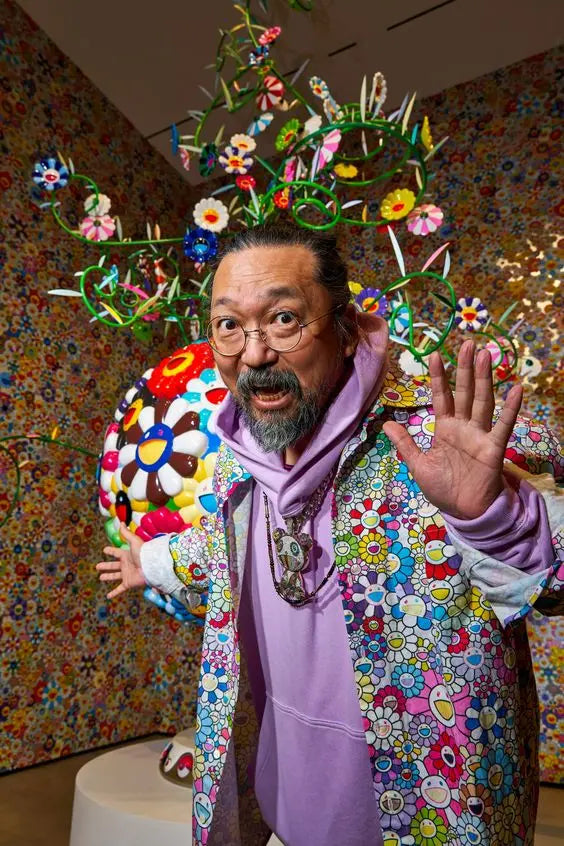Imagine a world where smiling flowers are worth millions, where Son Goku wanders through prestigious museums, and where contemporary art flirts with cartoons. Welcome to the colorful and offbeat universe of Takashi Murakami, the Japanese artist who conquered the world with his unique style.
Born in 1962 into a modest family in Tokyo, little Takashi grew up surrounded by cartoons and pop culture which were arriving in force in Japan. But make no mistake, his parents are old school types. Result ? A kid torn between tradition and modernity, between ancestral calligraphy and Grendizer. This improbable mixture is the secret recipe that will later make Murakami successful.
But before becoming the star of contemporary art that we know, Takashi must have had a hard time. Just imagine: the guy dreams of drawing manga, but finds himself studying traditional Japanese painting at university. It's like you want to become a DJ and they force you to learn classical violin. Not really his thing.
After years of hardship and a few jobs as an art teacher (yes, even future great artists have to pay their bills), Murakami had his moment. He discovered contemporary art and said to himself, “Hey, what if I mixed all that?” This is how the concept of “Superflat” was born, a style that mixes pop culture, manga, and traditional Japanese art.
But the real turning point was when Murakami arrived in New York in the 90s. With his broken English and not a penny in his pocket, he could have ended up as a waiter in a Japanese restaurant. Instead, he became the darling of the art world. How ? By creating works that get people talking: imagine Bulma and Son Goku in, let's say... unorthodox positions. Enough to make even the most jaded New Yorkers blush!
This is where the magic happens. Murakami invents his famous smiling flowers, these little colorful faces which will become his trademark. And there it is, the jackpot. Everyone wants it: art galleries, luxury brands, even rappers. Louis Vuitton, Supreme, Kanye West... Murakami collaborates with everything cool and hyped on the planet.
But be careful, Murakami is not just a commercial artist riding the wave of success. Behind his pop and joyful works often hides a deeper reflection on consumer society, otaku culture, or the traumas of post-war Japan. That's what makes it strong: it manages to convey serious messages while remaining accessible and fun.
Today, Murakami is everywhere. His works sell for millions, his collabs are a hit, and he even launched his own brand, KaiKai Kiki. It has become a real cash machine, but also a bridge between East and West, between elitist art and popular culture.
So yes, we can criticize the commercial side of his art. We can find that his flowers are always the same thing. But we must recognize that Murakami has achieved quite a feat: making contemporary art cool and accessible, while retaining real artistic depth. Not bad for a kid who just dreamed of drawing manga, right?
Ultimately, whether you're a fan or not, one thing is certain: Takashi Murakami has left his mark on art history in his own way. Colorful, quirky, and definitely unique. So the next time you see one of his works, whether in a museum or on a t-shirt, remember: behind those smiling flowers there may be a deeper message than it seems. Or maybe not. That’s also the magic of art!



Share: